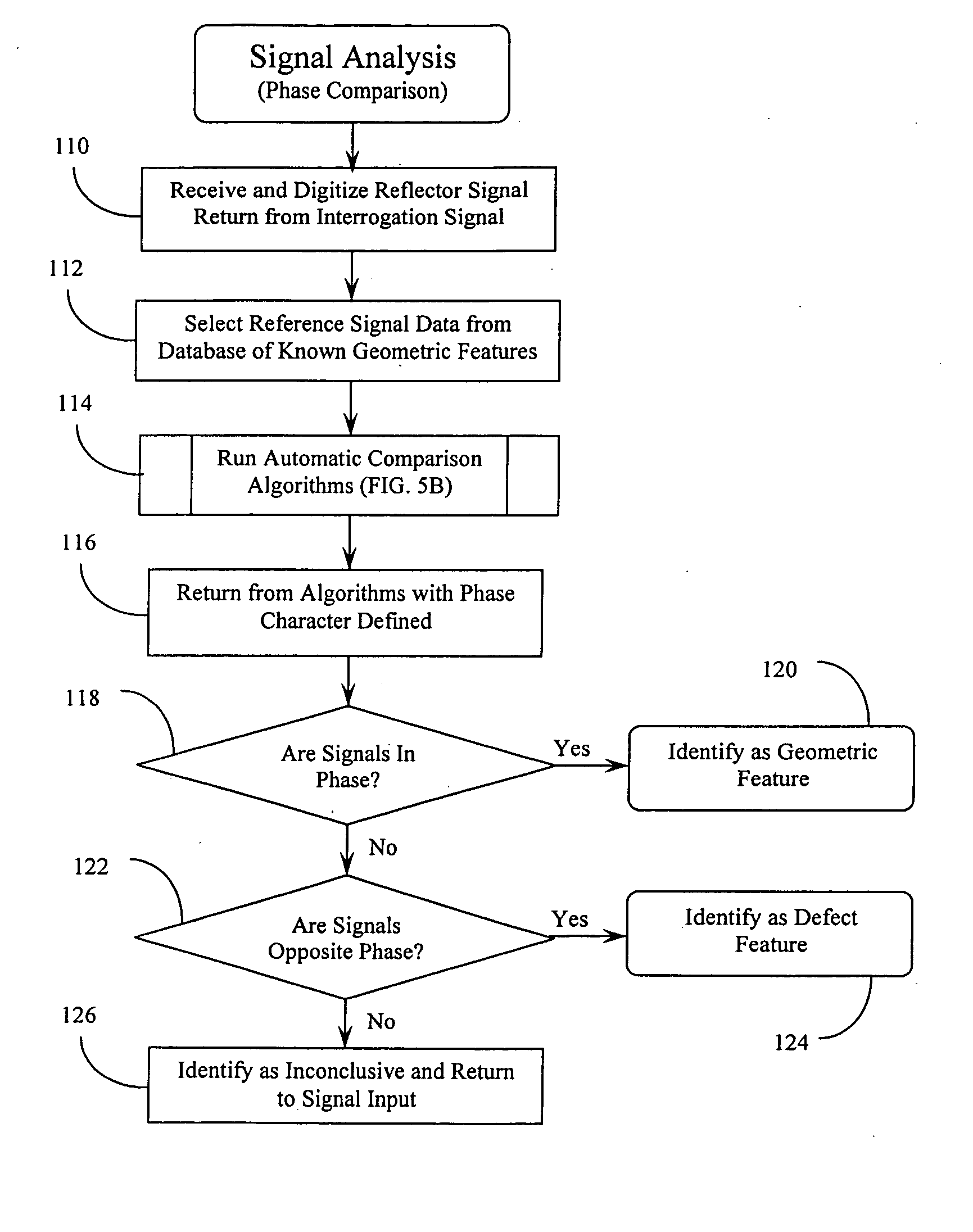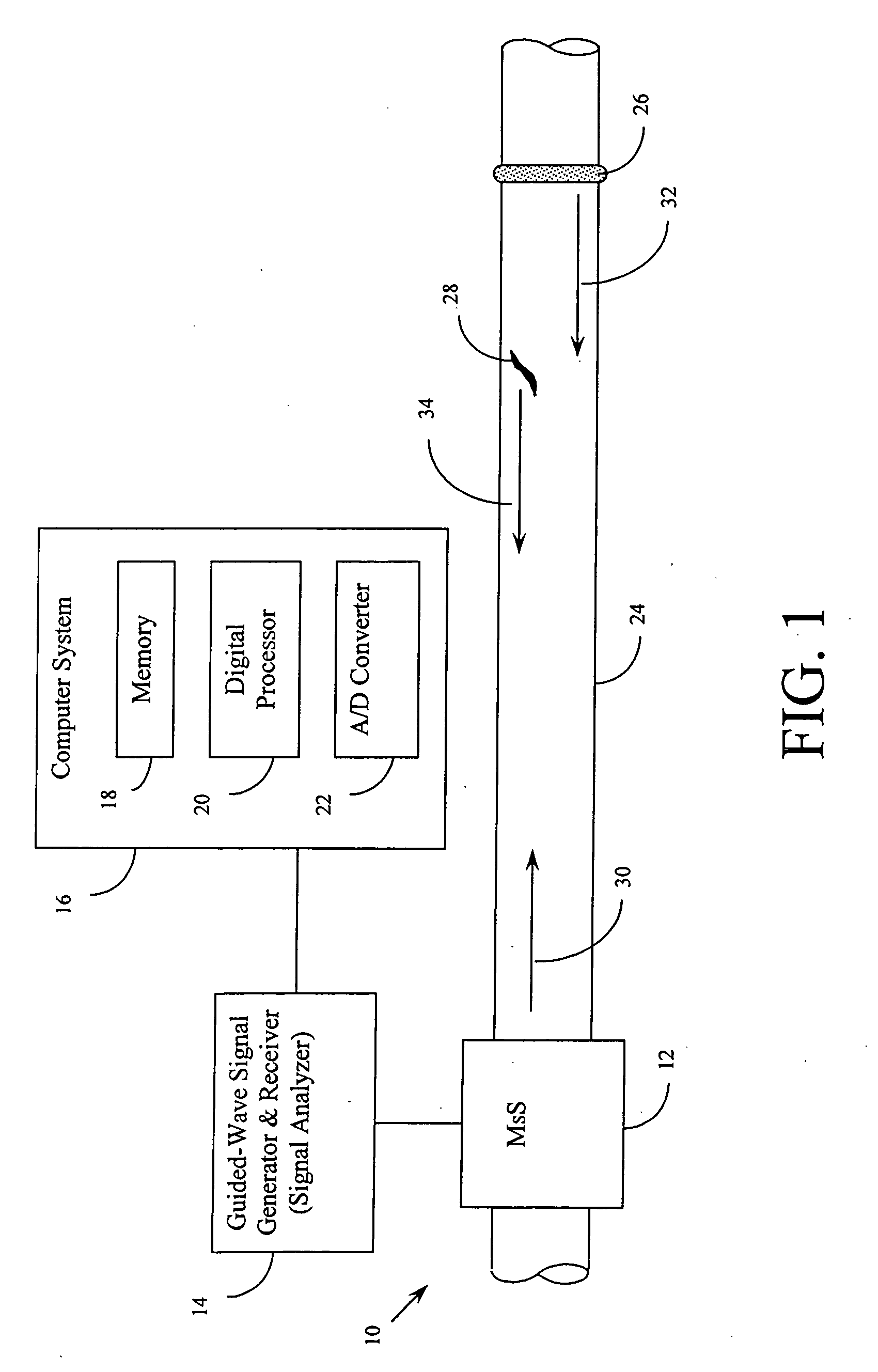Method for automatic differentiation of weld signals from defect signals in long-range guided-wave inspection using phase comparison
a technology of phase comparison and weld signal, which is applied in the direction of mechanical measurement arrangement, mechanical roughness/irregularity measurement, instruments, etc., can solve the problems of specific problems, time-consuming analysis of test data, and difficulty in proper identification of geometric feature signals
- Summary
- Abstract
- Description
- Claims
- Application Information
AI Technical Summary
Benefits of technology
Problems solved by technology
Method used
Image
Examples
Embodiment Construction
[0027] As summarized above, when an incident guided wave propagating along a structure encounters an increased cross-sectional area (for example, welds, weld attachments, and clamps), the wave reflected from that anomaly has the same phase as the incident wave. When the incident wave encounters a decreased cross-sectional area (as in defect locations), the reflected wave has an opposite phase to the incident wave. To illustrate the above, the experimentally measured incident waveform in a pipe and the reflected waves from a step-wise change in the pipe wall thickness is shown in FIG. 3. When the wave is propagated from the thinner section of the pipe (the top trace in the figure), the reflected wave from the step has the same phase as the incident wave. When the wave is propagated from the thicker section of the pipe (the bottom trace in the figure), the reflected wave from the step has the opposite phase to the incident wave.
[0028] The automatic differentiation of weld signals fro...
PUM
 Login to View More
Login to View More Abstract
Description
Claims
Application Information
 Login to View More
Login to View More - R&D
- Intellectual Property
- Life Sciences
- Materials
- Tech Scout
- Unparalleled Data Quality
- Higher Quality Content
- 60% Fewer Hallucinations
Browse by: Latest US Patents, China's latest patents, Technical Efficacy Thesaurus, Application Domain, Technology Topic, Popular Technical Reports.
© 2025 PatSnap. All rights reserved.Legal|Privacy policy|Modern Slavery Act Transparency Statement|Sitemap|About US| Contact US: help@patsnap.com



